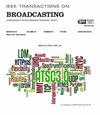Digital Entity Management Methodology for Digital Twin Implementation: Concept, Definition, and Examples
IF 4.8
1区 计算机科学
Q2 ENGINEERING, ELECTRICAL & ELECTRONIC
引用次数: 0
Abstract
Many efforts to achieve cost savings through simulations have been ongoing in the cyber-physical system (CPS) industry and manufacturing field. Recently, the concept of digital twins has emerged as a promising solution for cost reduction in various fields, such as smart cities, factory optimization, architecture, and manufacturing. Digital twins offer enormous potential by continuously monitoring and updating data to study a wide range of issues and improve products and processes. However, the practical implementation of digital twins presents significant challenges. Additionally, while various studies have introduced the concepts and roles of digital twin systems and digital components, further research is needed to explore efficient operation and management strategies. This paper aims to present digital entity management methodology for the efficient implementation of digital twin systems. Our proposed class-level digital entity management methodology constructs complex and repetitively used digital entities into digital entity classes. This approach facilitates the abstraction, inheritance, and upcasting of digital entity classes. By leveraging class-level management and easily reusable and modifiable digital entities, the implementation of low-complexity digital twin systems becomes feasible. The proposed methodology aims to streamline the digital twin implementation process, addressing complex technical integration and practical implementation challenges.数字孪生实现的数字实体管理方法:概念、定义和示例
在信息物理系统(CPS)行业和制造领域,通过模拟实现成本节约的努力一直在进行。最近,数字双胞胎的概念已经成为智能城市、工厂优化、建筑和制造等各个领域降低成本的有希望的解决方案。数字孪生通过持续监测和更新数据来研究广泛的问题并改进产品和流程,从而提供了巨大的潜力。然而,数字孪生的实际实施面临着重大挑战。此外,虽然各种研究已经介绍了数字孪生系统和数字组件的概念和作用,但需要进一步研究以探索有效的运营和管理策略。本文旨在提出有效实施数字孪生系统的数字实体管理方法。我们提出的类级数字实体管理方法将复杂和重复使用的数字实体构建到数字实体类中。这种方法促进了数字实体类的抽象、继承和上转换。通过利用类级管理和易于重用和修改的数字实体,低复杂性数字孪生系统的实现变得可行。提出的方法旨在简化数字孪生实施过程,解决复杂的技术集成和实际实施挑战。
本文章由计算机程序翻译,如有差异,请以英文原文为准。
求助全文
约1分钟内获得全文
求助全文
来源期刊

IEEE Transactions on Broadcasting
工程技术-电信学
CiteScore
9.40
自引率
31.10%
发文量
79
审稿时长
6-12 weeks
期刊介绍:
The Society’s Field of Interest is “Devices, equipment, techniques and systems related to broadcast technology, including the production, distribution, transmission, and propagation aspects.” In addition to this formal FOI statement, which is used to provide guidance to the Publications Committee in the selection of content, the AdCom has further resolved that “broadcast systems includes all aspects of transmission, propagation, and reception.”
 求助内容:
求助内容: 应助结果提醒方式:
应助结果提醒方式:


